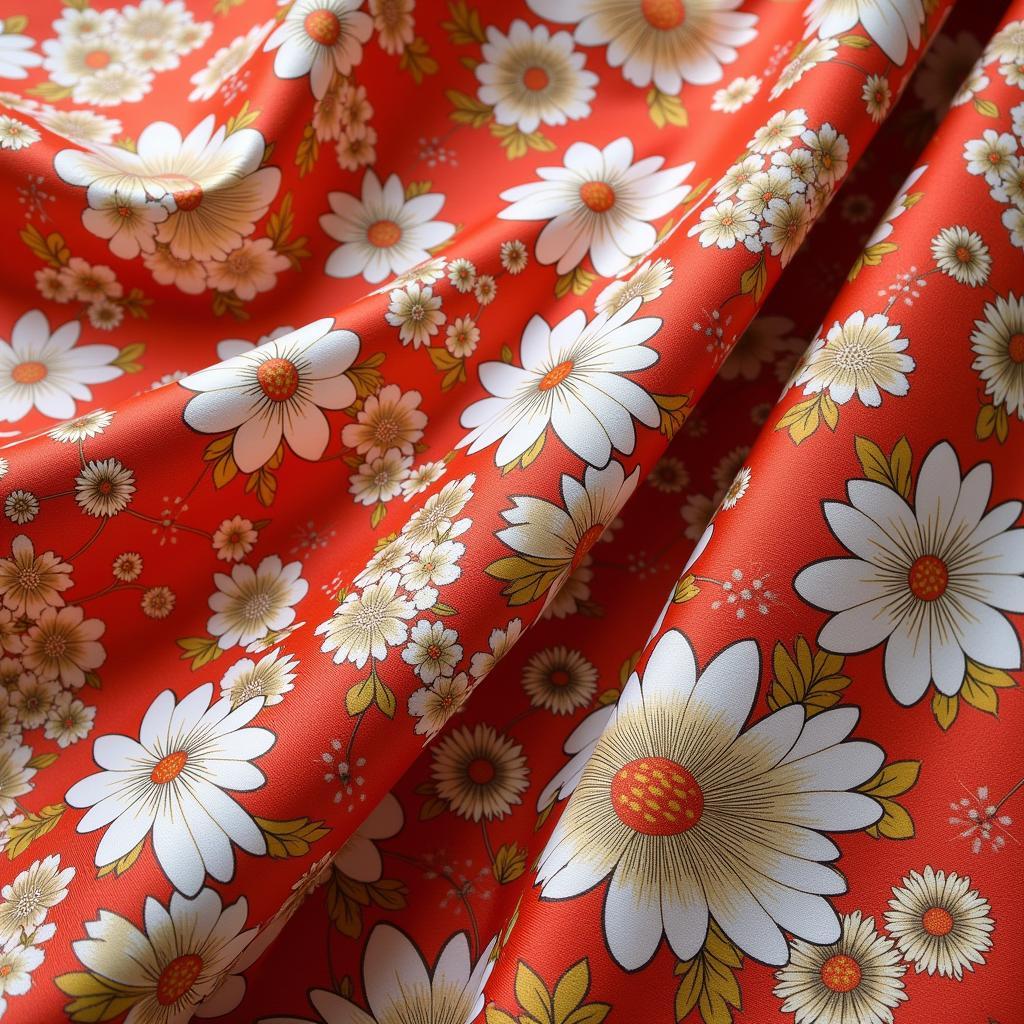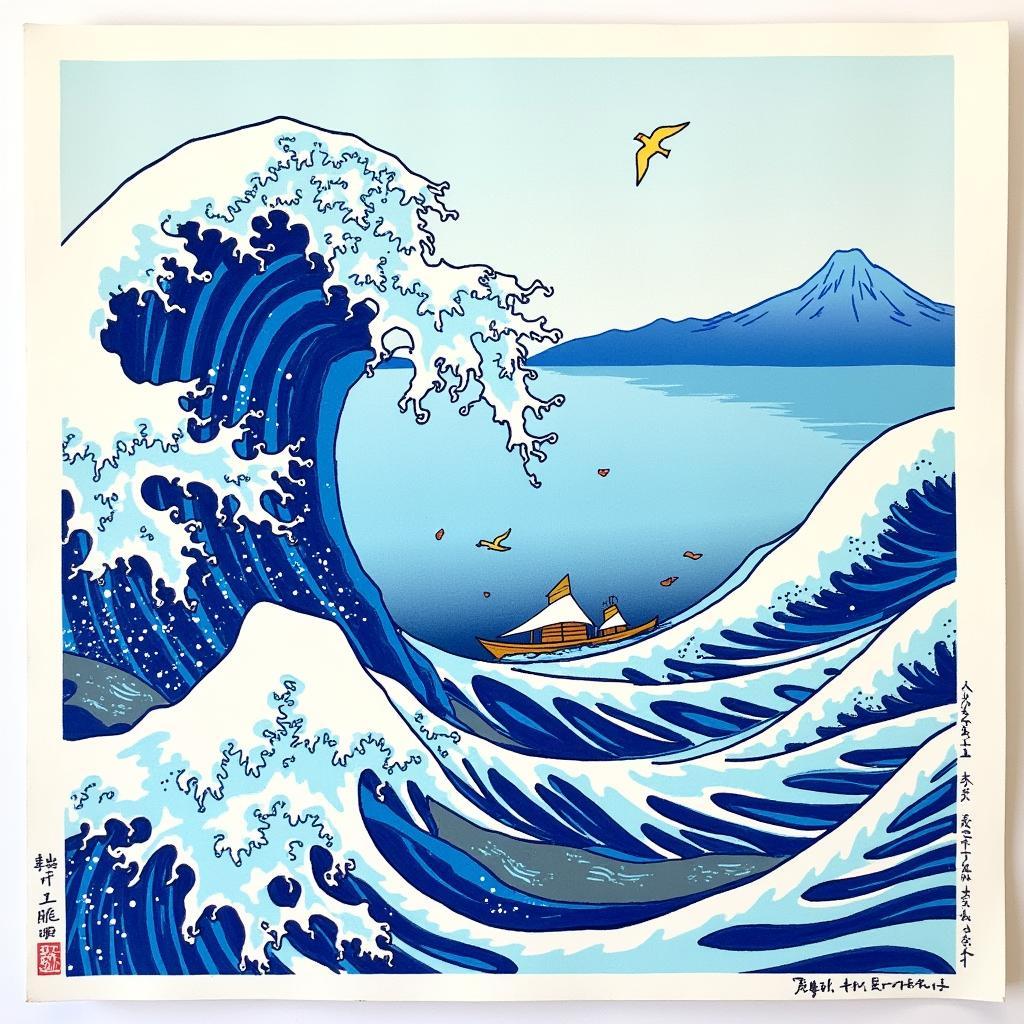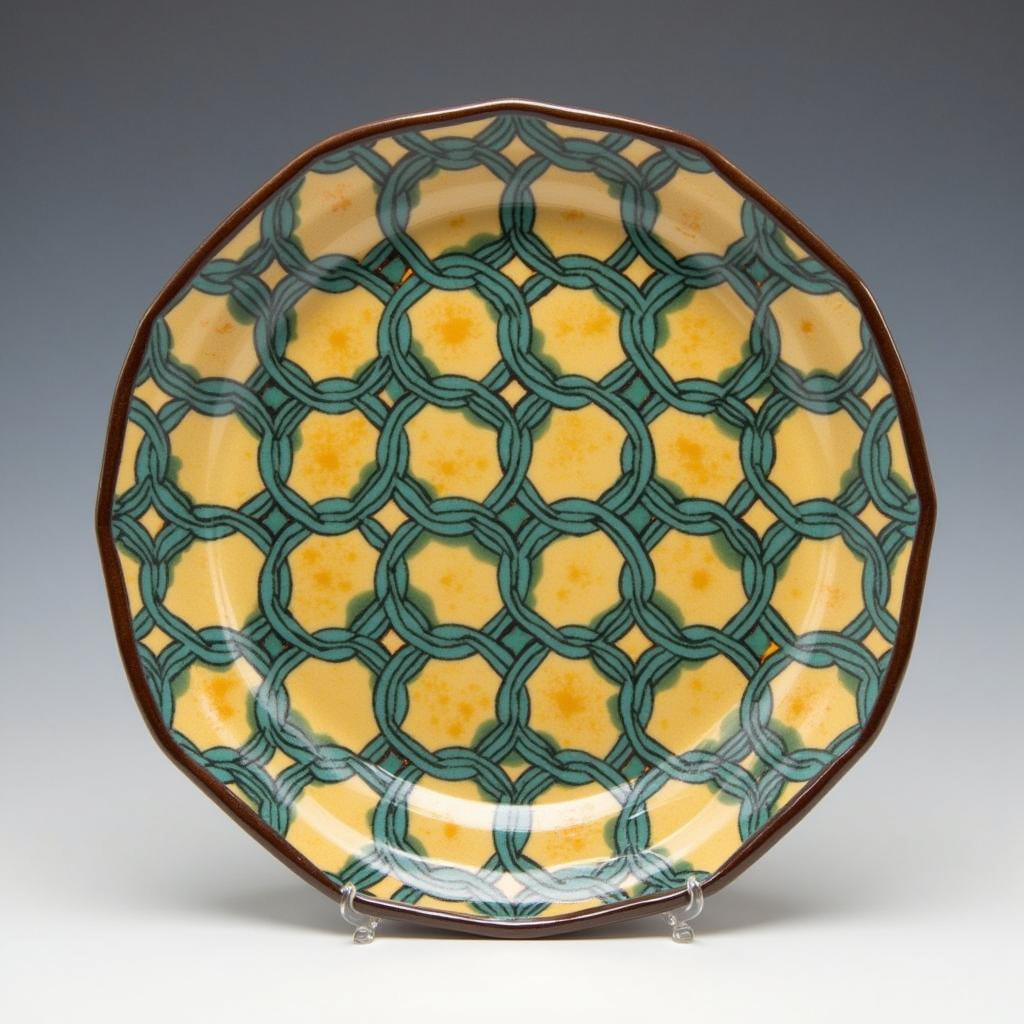Exploring the Beauty of Japanese Art Patterns
Japanese Art Patterns are a captivating blend of tradition, symbolism, and aesthetics. From intricate floral designs to bold geometric shapes, these patterns offer a glimpse into the rich cultural heritage of Japan and have inspired artists and designers for centuries. They’re not just visually stunning; they often carry deep meaning and tell stories, making them even more fascinating. Let’s delve into this beautiful world and uncover the secrets behind some of the most iconic Japanese art patterns. You might be surprised at just how many you recognize! Shortly after exploring some of the history, let’s take a look at japanese glass art for some inspiration.
The History and Significance of Japanese Art Patterns
Japanese art patterns have a rich history, evolving over centuries alongside Japanese art and culture. Many patterns originated from natural forms, such as flowers, leaves, and animals, reflecting the deep connection between Japanese culture and nature. Others draw inspiration from geometric shapes and abstract concepts, showcasing the innovative spirit of Japanese artists. These patterns aren’t just decorative; they often hold symbolic meaning, representing luck, prosperity, longevity, or protection from evil spirits. For example, the crane, often depicted in Japanese art patterns, symbolizes longevity and good fortune. Similarly, the cherry blossom represents the ephemeral nature of life and beauty.
Common Motifs in Japanese Art Patterns
Several recurring motifs characterize Japanese art patterns. These motifs, often combined and stylized in countless ways, create a visual language that adds depth and meaning to Japanese art. Some common examples include:
- Kiku (Chrysanthemum): This elegant flower symbolizes longevity and rejuvenation. It’s often used in autumnal designs and is associated with the imperial family.
- Sakura (Cherry Blossom): Representing the fleeting beauty of life, the cherry blossom is a popular motif in spring-themed art and clothing.
- Seigaiha (Blue Ocean Waves): This stylized wave pattern evokes a sense of calmness and tranquility, often associated with good luck and protection.
- Asanoha (Hemp Leaf): This geometric pattern, resembling overlapping hemp leaves, represents growth, health, and prosperity. It’s often used in children’s clothing.
- Shippo Tsunagi (Seven Treasures): This intricate interlocking circles pattern symbolizes interconnectedness and represents the seven treasures of Buddhism.
How Japanese Art Patterns are Used Today
Japanese art patterns continue to thrive in contemporary art and design. From traditional kimono fabrics to modern graphic design, these patterns add a touch of elegance and cultural significance. You’ll find them in fashion, interior design, packaging, and even digital art, demonstrating their timeless appeal. Imagine wearing a japanese art t shirt featuring a Seigaiha pattern, a subtle nod to the rich history and beauty of Japanese aesthetics.
 Traditional Japanese Kimono Fabric with Intricate Floral Patterns
Traditional Japanese Kimono Fabric with Intricate Floral Patterns
What is the cultural significance of Japanese art patterns?
Japanese art patterns are deeply intertwined with Japanese culture and history, reflecting the country’s aesthetic sensibilities and spiritual beliefs. Many patterns carry symbolic meaning, adding layers of interpretation to the artwork. They are not just decorative elements but also expressions of cultural values and traditions.
Where can I find examples of Japanese art patterns?
You can find examples of Japanese art patterns in museums, art galleries, and online resources. Traditional Japanese textiles, ceramics, and woodblock prints are excellent sources of inspiration. You could even find inspiring patterns on paper wall art, bringing a touch of Japanese aesthetic into your home.
 Japanese Woodblock Print Featuring the Seigaiha Wave Pattern
Japanese Woodblock Print Featuring the Seigaiha Wave Pattern
How are Japanese art patterns created?
Traditional Japanese art patterns are often created using techniques like woodblock printing, stenciling, and hand-painting. Modern artists and designers may utilize digital tools to create and manipulate these patterns, but the underlying principles and aesthetic values remain the same.
“The beauty of Japanese art patterns lies in their ability to connect us to nature, history, and cultural traditions,” says renowned Japanese art historian, Dr. Akira Yamamoto. “They are a testament to the enduring power of artistic expression.”
What are some simple Japanese art patterns for beginners?
Some simple Japanese art patterns for beginners include the Asanoha (hemp leaf), Seigaiha (wave), and Ichimatsu (checkerboard). These patterns are relatively easy to draw and can be a great starting point for exploring the world of Japanese art. Perhaps even explore making a cloth doll art project incorporating some of these simple patterns.
 Japanese Ceramic Plate with a Geometric Shippo Tsunagi Pattern
Japanese Ceramic Plate with a Geometric Shippo Tsunagi Pattern
Conclusion
Japanese art patterns offer a fascinating glimpse into the rich cultural heritage and artistic traditions of Japan. From their symbolic meanings to their diverse applications, these patterns continue to inspire artists and designers worldwide. By understanding the history and significance of these patterns, we can appreciate the depth and beauty of Japanese art. Let’s continue to explore and celebrate these timeless designs.
FAQ
- What is the most common Japanese art pattern? The Seigaiha (wave) pattern is one of the most recognizable and widely used Japanese patterns.
- What does the Kiku pattern symbolize? The Kiku (chrysanthemum) pattern symbolizes longevity and rejuvenation.
- Are Japanese art patterns still used today? Yes, Japanese art patterns are still widely used in various forms of art, design, and fashion.
- Where can I learn more about Japanese art patterns? Numerous books, websites, and museums offer resources for learning about Japanese art patterns.
- What are some popular Japanese art techniques? Woodblock printing, Ukiyo-e, and calligraphy are some popular Japanese art techniques.
- What is the meaning behind the Sakura pattern? The Sakura (cherry blossom) pattern represents the fleeting beauty of life.
- What are some traditional Japanese art forms? Ikebana (flower arranging), origami (paper folding), and bonsai (miniature tree cultivation) are some traditional Japanese art forms.
Have you ever tried your hand at making dumpling art? It’s a fun and creative way to explore another aspect of Japanese culture.
For further exploration on Japanese aesthetics, you might be interested in topics like Japanese architecture, garden design, and tea ceremony. These areas also showcase the deep appreciation for nature, simplicity, and harmony that is characteristic of Japanese culture.
If you need any assistance, please contact us. Phone: 02462573573, Email: danteum@gmail.com. Or visit our location: Savico Megamall, 7-9 Đ. Nguyễn Văn Linh, Gia Thụy, Long Biên, Hà Nội 10000, Việt Nam. We have a 24/7 customer service team.

